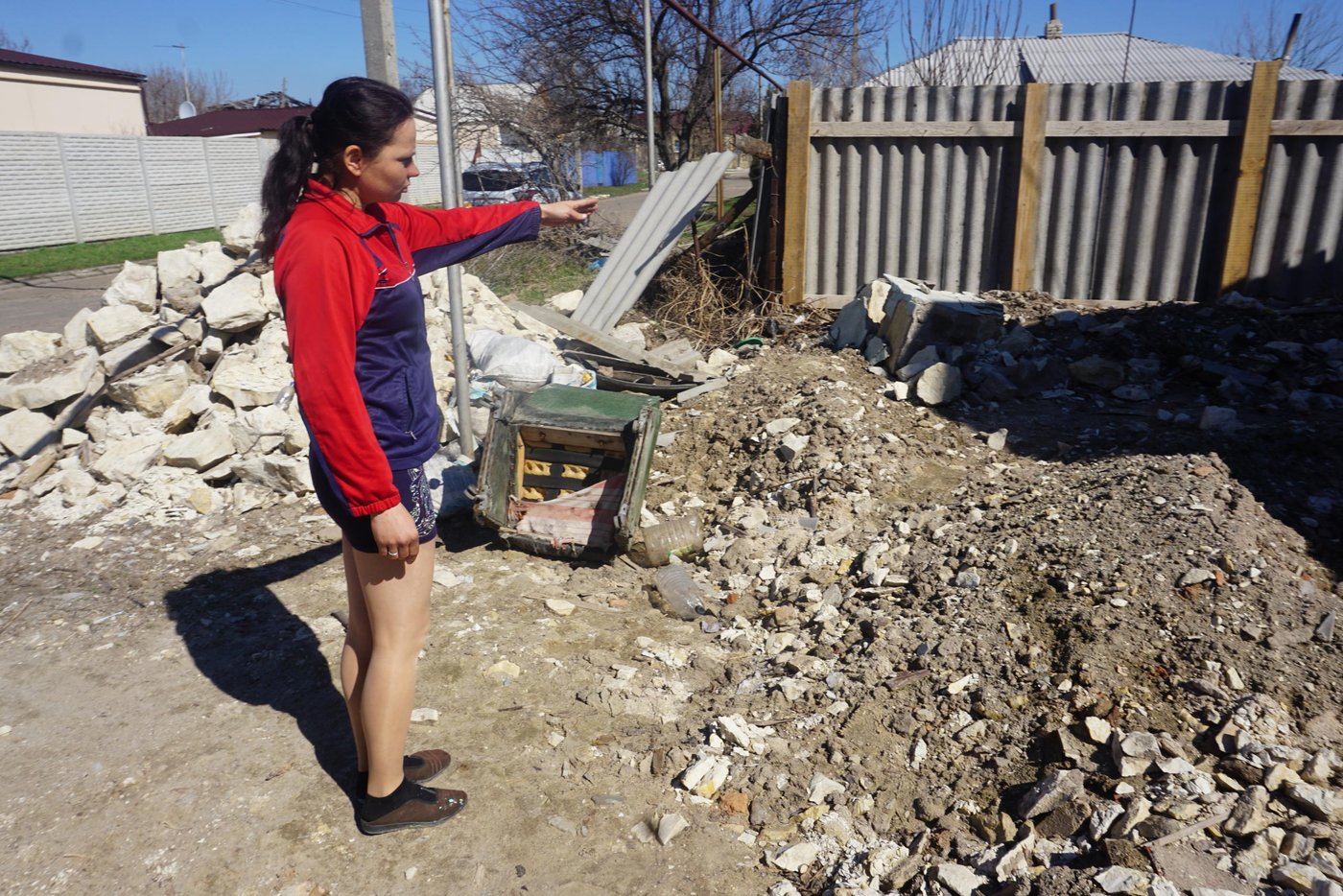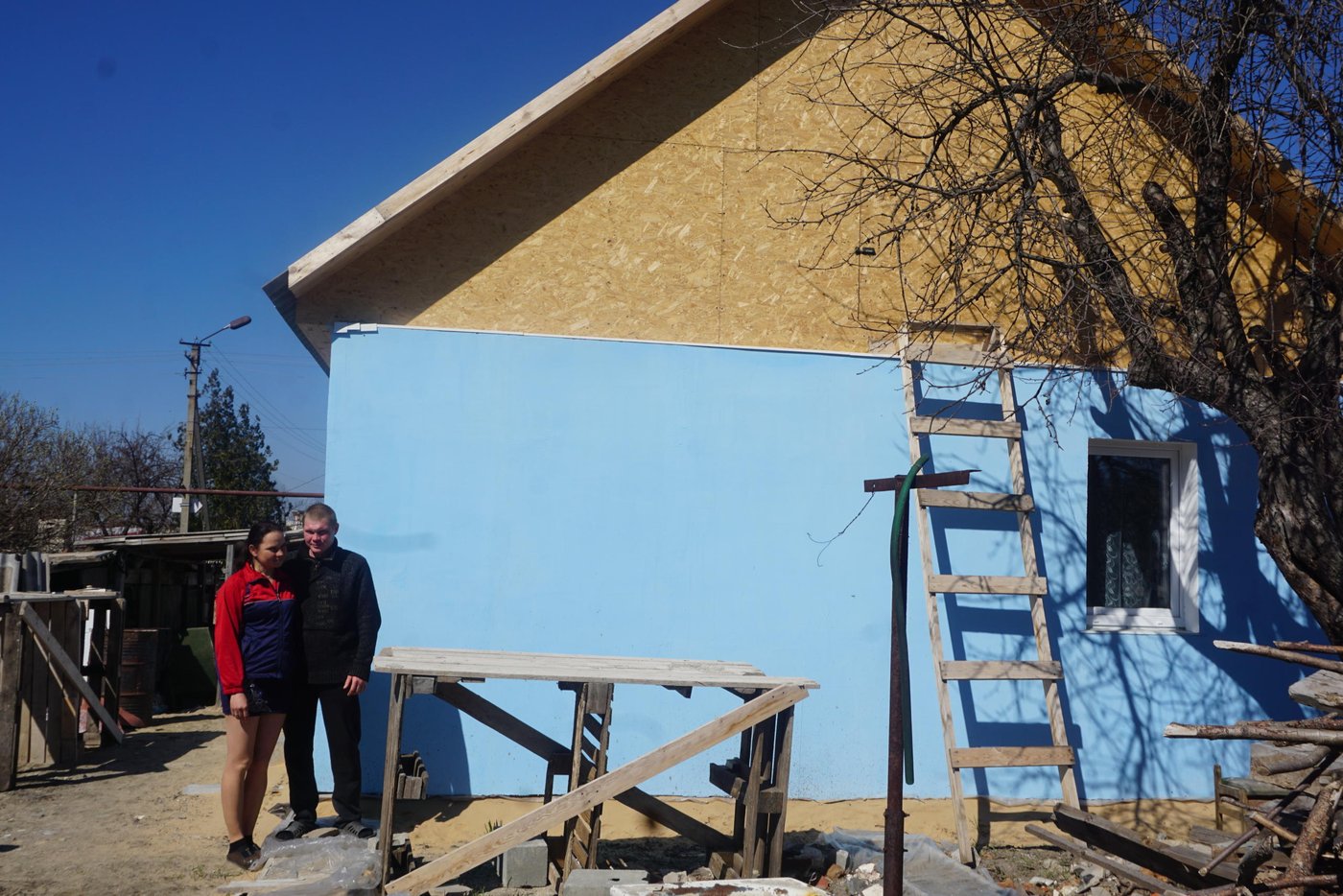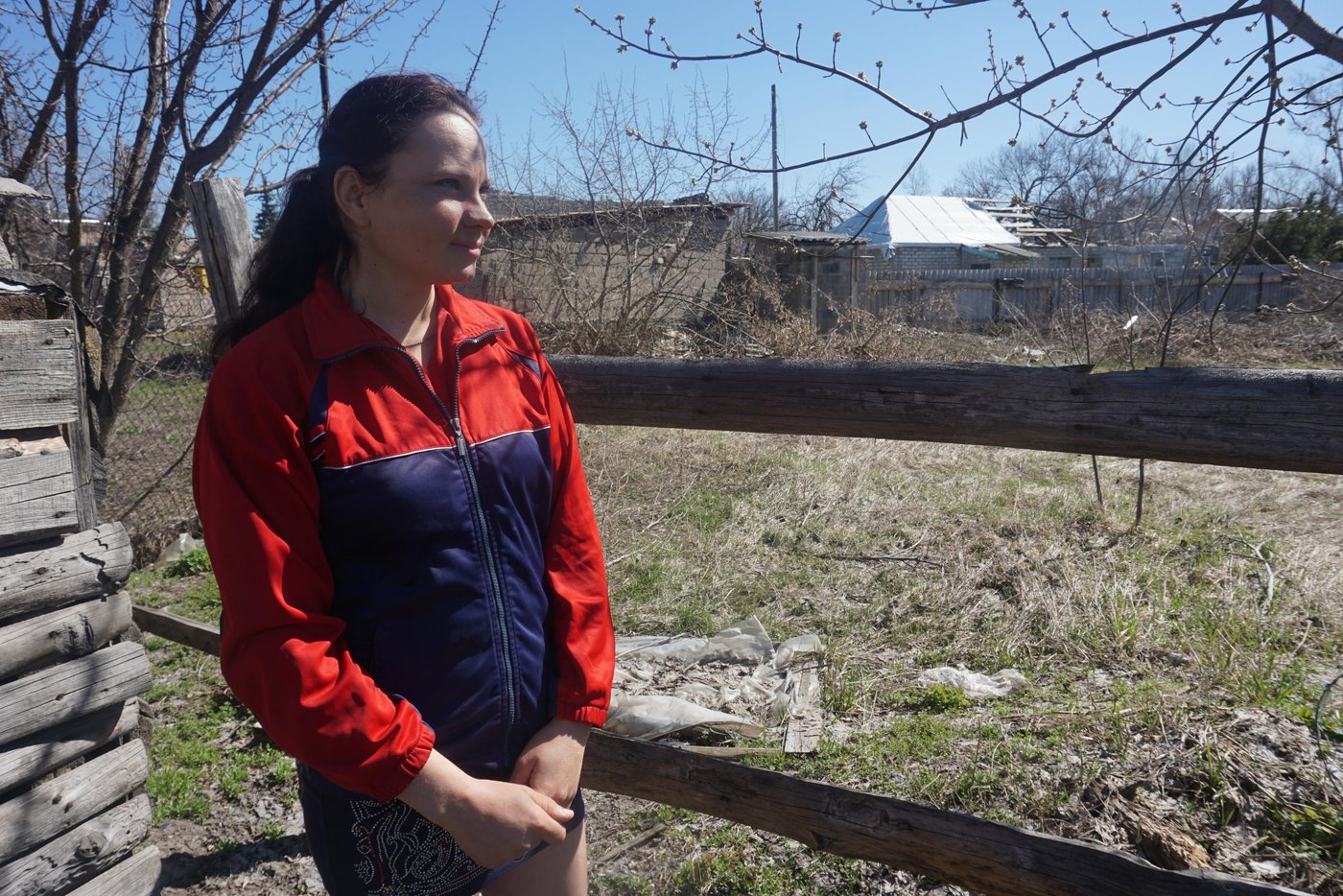In May 2014, hostilities erupted in Stanytsia Luhanska. Air strikes, heavy shelling and landmines became a terrifying reality for the family of three.
“The first shells fell 30 metres from our house. A neighbour died right in front of my son’s eyes. Shrapnel killed her,” recalls Nina Ihnatenko, 36.
However, they didn’t dare to leave – even when the town was engulfed in flames. They hid in a small shed and spent nights in a neighbour’s basement, since they did not have one of their own.
Life without a roof
Before the outbreak of the armed conflict in eastern Ukraine, her husband, Vsevolod, 36, worked at a plant in the nearby city of Luhansk. Kyrylo, their son, who is 18 now, attended a local school. Nina worked in the forestry sector. The family also managed greenhouses, like most residents in this rural area.
On 15 February 2015 − the day of the ceasefire announcement − the family experienced the most tragic day of their lives. On that day, they lost their home amid late-night fighting.
“We were visiting our relatives, not far from our house. The artillery attack started, and we decided to wait it out and not rush home. When the shelling stopped, it turned out that we had nowhere to return to,” Nina says with tears in her eyes.
Two huge shells destroyed their house. Their son’s room took a direct hit. The family lost everything and were overwhelmed by a sense of emptiness, hopelessness and uncertainty.
“The only thing that comforted us was that all our relatives and friends were alive,” says Nina.
After the destruction of their home, the family moved to Luhansk, a city not under government control, to live with Nina’s mother.
“We didn’t live in Stanytsia Luhanska for almost three years. From time to time, we used to visit the ruins of our house because we were homesick,” notes Nina.

Help from NRC, friends and relatives
On the advice of her friends, Nina turned to the Norwegian Refugee Council (NRC) for assistance and, in spring of 2018, construction began on a new house in Stanytsia Luhanska.
“We removed the ruins of our old house before we started building a new one with our own hands,” says Nina. With the help of friends and relatives, the family tried to work as quickly as possible, since the construction materials had already been delivered by NRC. However, Nina realised that they couldn’t handle such a complex task as building a new house all by themselves.
Finally a new home
“It was hard to find builders. There are not so many of them in the town, and those working at that time were already busy reconstructing 5–6 houses and were in no hurry to accept new offers. Finally, we found some builders to help us. They poured concrete for the foundation, erected the walls and constructed the roof. We did all the other exterior and interior work ourselves. Construction materials were provided in full. However, it was difficult to stay within the budget allocated to us, since prices were constantly increasing,” emphasises Nina.
The family moved into their new house in early December 2018, six months after construction started.
“People, who really want and need something, will make every effort to achieve their goal. We got in touch with other locals, who were also rebuilding houses with support from NRC, observed each other’s construction work and shared our successes,” smiles Nina.
She dreams of a future without war. She believes in it. However, she is also haunted by a feeling of anxiety.
“I don’t want my son to live in constant fear. I want him to have the opportunity to start a family and raise his own children in a country at peace,” says Nina.



